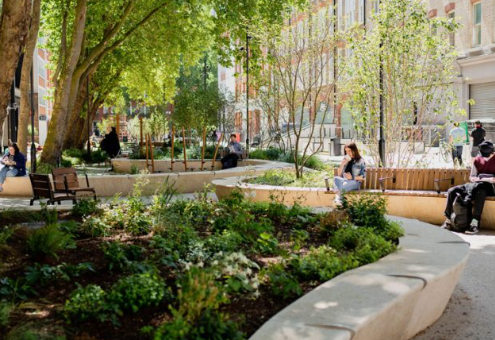Landscape Architecture and Architecture: Harmonizing Nature and Structure
In today’s rapidly evolving world, the intersection of landscape architecture and traditional architecture has become increasingly significant. As urban spaces expand, the balance between built environments and natural landscapes is crucial for sustainability, aesthetics, and community well-being. This article delves into the key elements of landscape architecture and its synergy with architecture, illustrating why this collaboration is essential for future developments.
The Importance of Integrating Nature into Urban Design
Enhancing urban areas through the integration of nature is a core principle of landscape architecture. With the rising urbanization, cities face challenges such as pollution, heat islands, and limited green spaces. Landscape architects create designs that not only beautify areas but also mitigate these issues, promoting biodiversity and improving air quality. Incorporating parks, green roofs, and community gardens into urban planning can significantly enhance the quality of life, providing residents with spaces for relaxation, recreation, and social interaction.
Balancing Aesthetics and Functionality
Architecture often emphasizes structural elements, while landscape architecture focuses on the surrounding environment. The successful collaboration between these two disciplines creates spaces that are both visually appealing and functional. For instance, commercial buildings with thoughtfully designed landscapes can attract more visitors and increase property values. The use of indigenous plants, water features, and sustainable materials in landscape design complements the architecture, creating a harmonious balance that enhances both aesthetics and functionality. This thoughtful integration invites users to experience spaces that are not only beautiful but also practical and welcoming.
Sustainability in Design Practices
Sustainability is a foundational aspect of both landscape and architecture, driving the need for innovative design solutions. As climate concerns become more pressing, architects and landscape architects are tasked with creating designs that utilize sustainable practices. This may involve selecting eco-friendly materials, optimizing energy efficiency, and implementing rainwater harvesting systems. Additionally, landscape architects play a crucial role in managing stormwater through clever design elements, reducing runoff, and promoting groundwater recharge. By prioritizing sustainability, professionals from both fields can contribute to building resilient communities that thrive in harmony with their natural surroundings.
In conclusion, the collaboration between landscape architecture and architecture presents a myriad of opportunities for enhancing urban environments. By fostering a synergy between built environments and nature, we can create spaces that are sustainable, aesthetically pleasing, and functional. As we move into the future, embracing this integrated approach is vital for nurturing our communities and promoting well-being. If you’re interested in exploring this topic further, consider visiting local parks, engaging with community planning initiatives, or connecting with landscape and architecture professionals to see how you can contribute to creating greener, more balanced environments.

